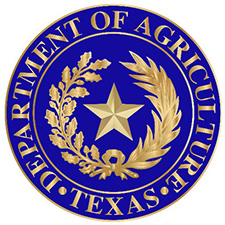(AG Insider) The government will spend $300 million a month to buy fresh produce, dairy and meat products that will be packaged into a box for food banks and other charities to give to hungry Americans, said Agriculture Secretary Sonny Perdue. Some $3 billion will be spent on purchases of surplus foods for donation in an initiative that resembles the “America’s Harvest Box” idea promoted by Perdue for delivering a portion of SNAP benefits.
In an announcement on Friday, Perdue said the UDA would partner with regional and local distributors to carry out the purchase, packing and distribution of the boxes. With the near-shutdown of the food-service sector, food distributors have idle warehouses, trucks and workers, he said. The purchases could resolve two problems — the rising demand for food assistance during the economic slowdown, and reduced wholesale demand that has resulted in dairy farmers pouring milk down the drain and specialty crop growers plowing under crops.
“We are still examining the details, but this effort has the potential to be a significant food resource for people facing hunger,” said Claire Babineaux-Fontenot, chief executive of Feeding America, a network of food banks. “This program is designed to ensure nutritious food from growers and producers makes it on to the tables of our neighbors now when they need it most. We look forward to working closely with USDA on how to most efficiently operationalize the plan in the coming days.”
The largest U.S. farm group, the American Farm Bureau Federation, said the purchases “will help to stabilize markets and keep farms afloat … Farmers and ranchers proudly accept the responsibility of feeding this nation and it’s heartbreaking to be forced to dispose of milk and plow under crops of fresh food at a time when others are going hungry.”
“It’s a new idea. We have never done this before,” responded Perdue during a teleconference when asked about the similarities to the “harvest box,” his brain child. Congress rejected the idea in 2018 and 2019 but the administration proposed it again this year. This time, the White House said the “harvest box” of U.S.-grown staple foods could replace half of food stamp benefits and save billions of dollars through bulk purchasing. Skeptics say daunting logistical issues make the idea unworkable.
The Agricultural Marketing Service, a USDA agency, said it would buy $100 million apiece of fresh fruit and vegetables, dairy products, and meat products monthly. The USDA will seek bids in the next two weeks for companies to deliver the boxes to nonprofit organization, it said in a statement. “USDA will award contracts for the purchase of the agricultural products, the assembly of commodity boxes and delivery to identified non-profit organizations that can receive, store and distribute food items.”
Today’s quick hits, April 22, 2020
Beef plant reopens, pork plant closes (The Gazette): A beef plant in Tama, Iowa, resumed production Monday after being idled for two weeks due to an outbreak of Covid-19 among its workers. Reuters reports a pork processing plant in Minnesota owned by meatpacker JBS USA closed indefinitely after at least 26 cases of Covid-19 were linked to the plant.
Don’t fence me in (New York Times): Urban professionals, already weary of high prices, are beginning to wonder if they need to live in town when the pandemic has shown they can do their jobs digitally from smaller cities, suburbs and exurbs.
Illinois and Arizona get more food assistance (USDA): With the addition of Illinois and Arizona, six states have USDA approval of plans to provide Pandemic Electronic Benefit Transfer assistance to low-income families whose children have lost access to free or reduced-price meals due to school closures; the other states are Michigan, Rhode Island, North Carolina and Massachusetts.
‘Day of action’ on SNAP (FRAC): Anti-hunger groups, including the Food Research and Action Center, called a “national day of action” for Wednesday to urge lawmakers to boost SNAP benefits by 15 percent in the next coronavirus relief bill and to suspend three USDA proposals that would narrow eligibility for food stamps.











